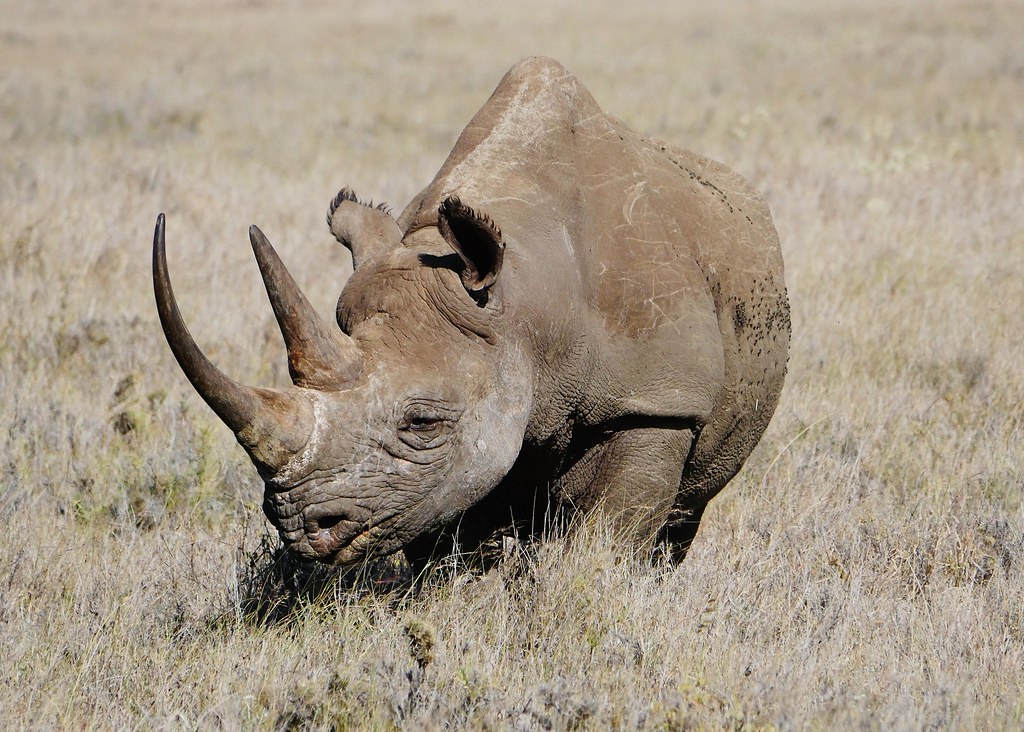
Black Rhinoceros Or Hooklipped Rhinoceros (Diceros bicorn… Flickr
The black rhino is smaller than the white rhino, although adults can still reach 1.5 metres in height and weigh in at 1.4 tonnes. The species is distinguished from the white rhino by a prehensile upper lip (hence the alternative name of hook-lipped rhino), which it uses to feed on twigs of woody plants and a variety of herbaceous plants. They.

The Black Rhinoceros or Hooklipped Rhinoceros Stock Image Image of
The southern black rhinoceros, southern hook-lipped rhinoceros or Cape rhinoceros (Diceros bicornis bicornis) is an extinct subspecies of the black rhinoceros that was once abundant in South Africa from the Cape Province to Transvaal, southern Namibia, and possibly also Lesotho and southern Botswana.Zoos, animal sanctuaries and conservation centers use this same scientific name as an.

The Black Rhinoceros or Hooklipped Rhinoceros Stock Image Image of
The The African Rhino Specialist Group (AfRSG) of the IUCN's Species Survival Commission (SSC) estimates a 12% growth in black rhino populations in recent years, from approximately 5,495 individuals in 2017 to more than 6,000 today.. Prehensile or hook-lipped rhinoceros. The upper lip of the black rhino is adapted for feeding from trees.

Black rhinoceros (hooklipped rhinoceros) (Diceros bicornis
Black rhino Also called the hook-lipped rhino due to their prehensile upper lip, black rhinos are the smaller of the two African species. They were once found throughout sub-Saharan Africa, with the exception of the Congo Basin. They are now limited to protected areas in the east and south of the continent.

The Black Rhinoceros or Hooklipped Rhinoceros Stock Image Image of
The black rhinoceros, black rhino or hook-lipped rhinoceros (Diceros bicornis) is a species of rhinoceros, native to eastern and southern Africa including Angola, Botswana, Kenya, Malawi, Mozambique, Namibia, South Africa, Eswatini, Tanzania, Zambia, and Zimbabwe.Although the species is referred to as black, its colours vary from brown to grey.It is the only extant species of the genus Diceros.
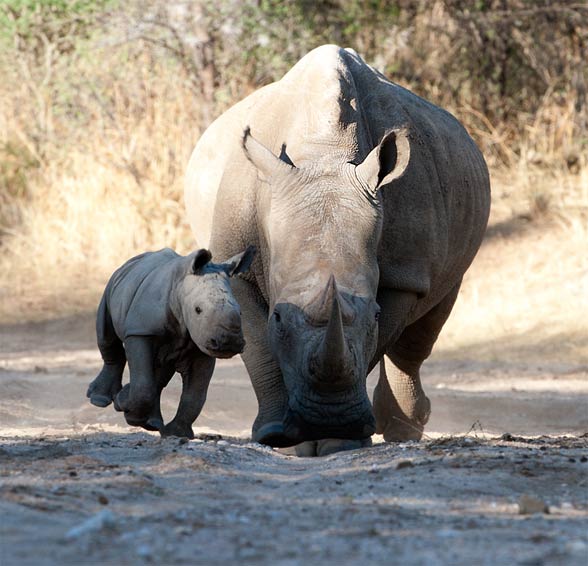
Black rhinoceros hooklipped rhino
The black rhino, or rhinoceros, is one of two species of African rhino (and five species worldwide.)This species is also known as the "hook-lipped rhino" for its pointed upper lip. The other African species, the "white rhino," has a broad, squared, upper lip. Black rhinos are considered to be Critically Endangered, and three different subspecies have already been declared Extinct by.
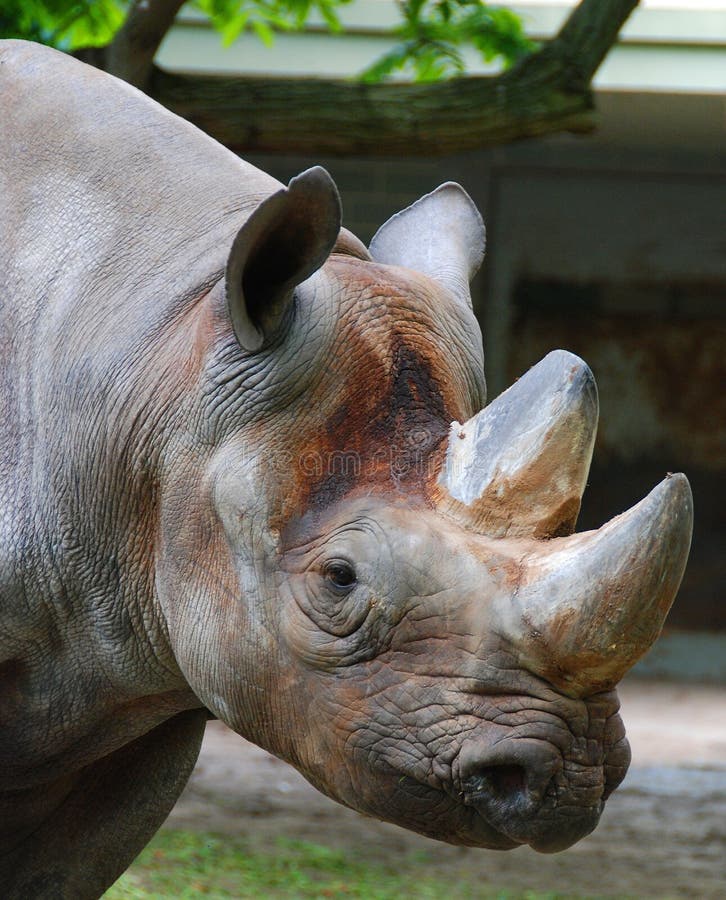
The Black Rhinoceros or Hooklipped Rhinoceros Stock Photo Image of
About black rhinos. Synonym: Hook-lipped rhino Scientific name: Diceros bicornis: "Di" meaning "two", "cerato" meaning "horn" in Greek and "bi" meaning "two", and "cornis" meaning "horn" in Latin Subspecies: There are four subspecies of the black rhino: Southern Central black rhino Diceros bicornis minor Eastern black rhino Diceros bicornis michaeli
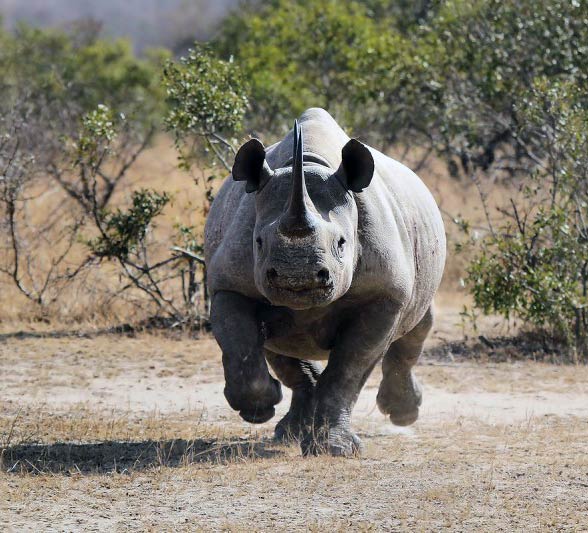
Black rhinoceros hooklipped rhino
Diceros the hook-lipped or black rhinoceros with six subspecies:. D. 2013. Focus on the white/square-lipped rhinoceros (Ceratotherium simum). S A Hunter 04075:22-24. View full-text.
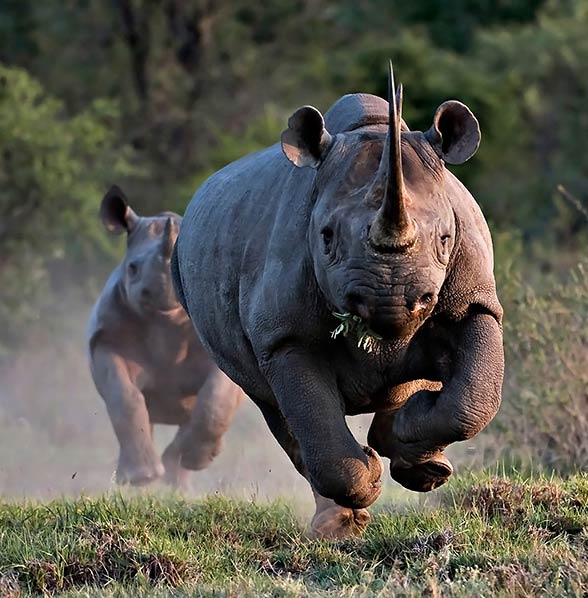
Black rhinoceros hooklipped rhino
The hook-lipped rhinoceros has a broad range of vocalisations. It can grunt, growl and also make quiet, short pig-like squeals: most frequent, however, is a snorting snuffle, repeated three or four times, which it makes when anxious or shortly before an attack. A loud yip or whistle is used to express pain or suffering, as well as by calves to.

The Black Rhinoceros or Hooklipped Rhinoceros Stock Photo Image of
Black rhinoceros, hook-lipped rhinoceros (Diceros bicornis). The black rhinoceros - curiosities: The black rhino is the best-known species among the other five existing. The longest registered front horn was almost 150 cm (59 in). It happens sometimes that there is a third small horn on the foreface.

Hooklipped Rhinoceros, Diceros bicornis Hooklipped Rhino… Flickr
The black rhinoceros (Diceros bicornis), also known as the hook-lipped rhinoceros, is the smaller of the two African rhino species. Effective conservation projects have seen black rhino numbers inch upward in the last few years; however, they still remain critically endangered, with poaching for their horns causing a grave threat to their survival.

Hooklipped Rhinoceros, Diceros bicornis Hooklipped Rhino… Flickr
Black rhinos, otherwise known as the hook-lipped rhino, is one of two species of rhinoceros native to Africa (the other being the white rhino). Although once found across sub-Saharan Africa , rampant poaching has consequently limited the geographical distribution of the remaining black rhino population.
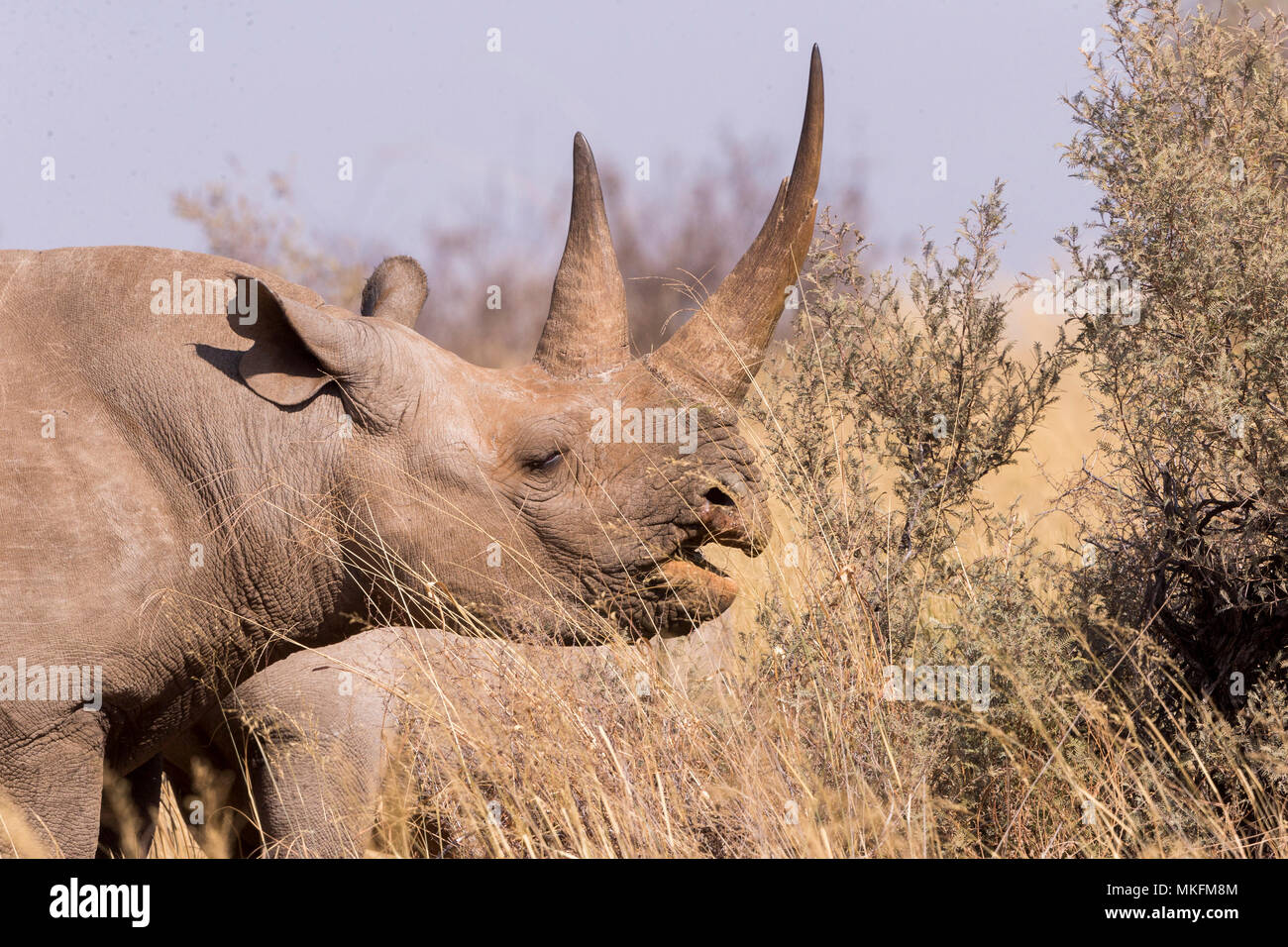
Black rhinoceros or hooklipped rhinoceros (Diceros bicornis), adult
Diceros the hook-lipped or black rhinoceros with six subspecies: D. bicornis longipes the West African black rhinoceros that is believed to have become extinct in 2006.

Black Rhinoceros or Hooklipped Rhinoceros (con imágenes) Animales en
Browse rhino; Prehensile-lipped or hook-lipped rhinoceros; Rhinoceros noir (French) Spitzmaulnashorn (German) Faru (Swahili) Scientific name. Etymology (from Gotch 1995) Genus Diceros. From two Greek words; di meaning "two" or "double" and keras meaning "a horn" Specific epithet.
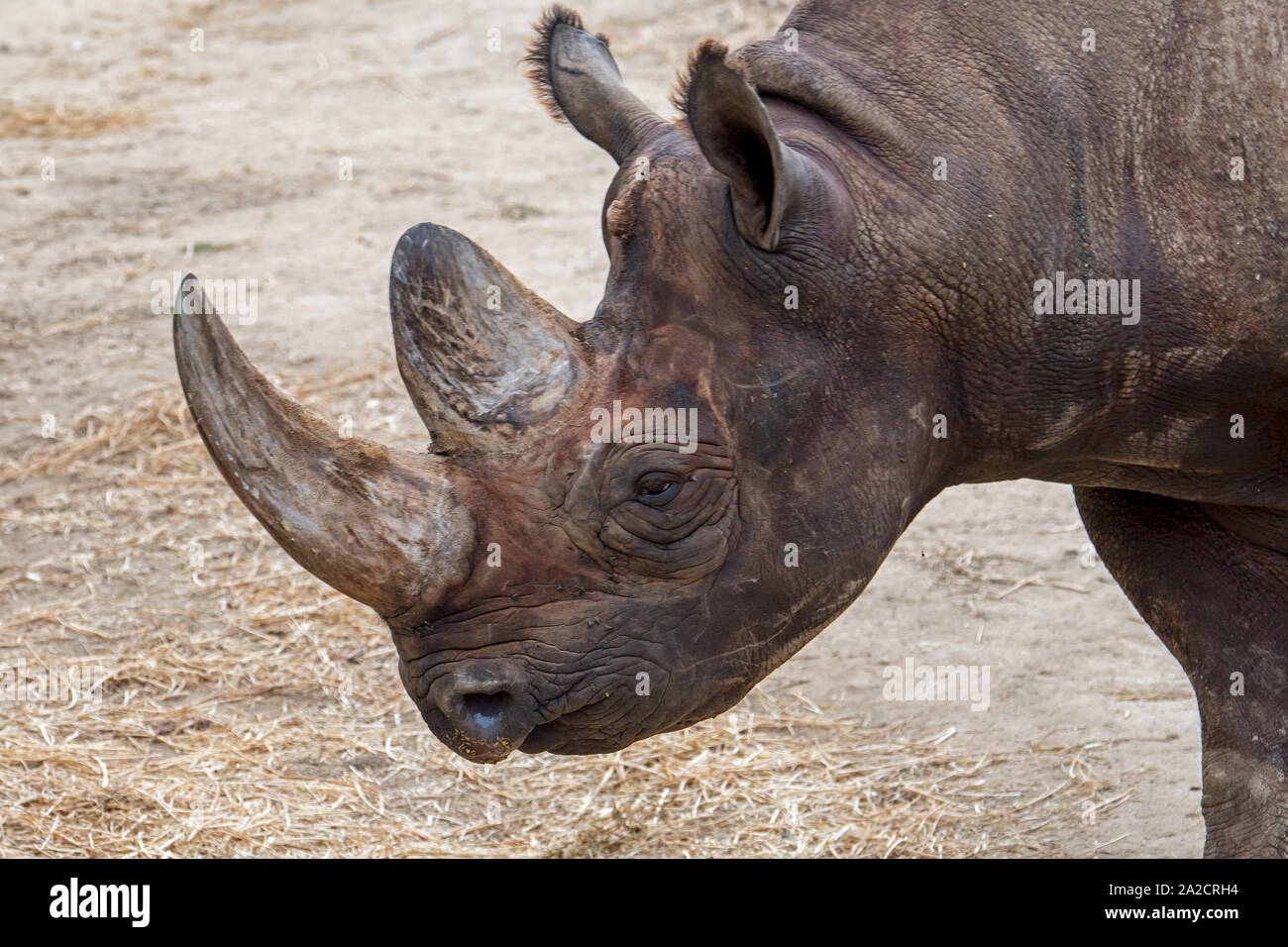
Black rhinoceros / black rhino / hooklipped rhinoceros (Diceros
The black rhinoceros, black rhino or hook-lipped rhinoceros is a species of rhinoceros, native to eastern and southern Africa including Angola, Botswana, Kenya, Malawi, Mozambique, Namibia, South Africa, Eswatini, Tanzania, Zambia, and Zimbabwe. Although the species is referred to as black, its colours vary from brown to grey. It is the only extant species of the genus Diceros.

Hooklipped Black African Rhinoceros Stock Photo Alamy
The black rhinoceros or hook-lipped rhinoceros (Diceros bicornis) is a species of rhinoceros, native to eastern and southern Africa including Angola, Botswana, Kenya, Malawi, Mozambique, Namibia, South Africa, Eswatini, Tanzania, Zambia, and Zimbabwe. Although the rhinoceros is referred to as black, its colours vary from brown to grey.